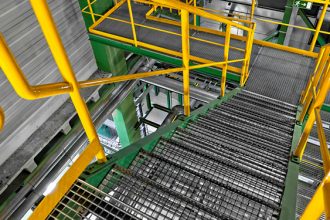Repair The Rack System Versus Repair The Damaged Component

Rack systems’ appearance is deceptively simple. Uprights and beams form a framework that holds pallets with loads of product; to the casual observer, these systems don’t look overly complex. So if a rack component is damaged, it should just be a matter of swapping in a new piece that looks the same and securing it, right?
In fact, nothing could be further from the truth. Although pallet rack might be manufactured for adjustability and assembly into multiple configurations, the precise determination of a given rack design and its subsequent construction results from a significant number of carefully conducted engineering calculations. An “easy” patch job may render an existing system unsafe, or create additional risk of collapse in a system that has been moved or reconfigured.
Indeed, the vast majority of rack systems are engineered specifically for a single storage configuration and capacity. As explained in RMI’s ANSI MH16.1-2012: Specification for the Design, Testing and Utilization of Industrial Steel Storage Racks, section 1.4.5, if a pallet rack system is designed for more than one shelf configuration or profile, the Load Application and Rack Configuration Drawings should include all possible elevation configurations.
For systems with the original design documentation that have not been modified or reconfigured, damaged components can normally be replaced with identical new components from the same manufacturer.
The same does not hold true for undocumented or reconfigured systems. For that reason, rack owners and facility managers should not attempt to undertake a rack repair without first engaging the services of a qualified, professional engineer to supervise and direct the assessment of the system’s condition, as well as design and oversee the ultimate repair or replacement.
The engineer will first examine the existing structure and compare it to its original sealed and stamped engineering drawings as well as to current applicable building codes and standards. This process verifies that the structure is still in its original location and configuration, as well as determines if a rack system installed several years ago still meets current standards, which continuously evolve and improve over time. Without first conducting this critical evaluation, simply repairing a damaged component may leave the rest of the system in an unsafe condition and can lead to failure.
To learn more about rack repair best practices, download RMI’s Guideline for the Assessment and Repair or Replacement of Damaged Rack – Version 1.


